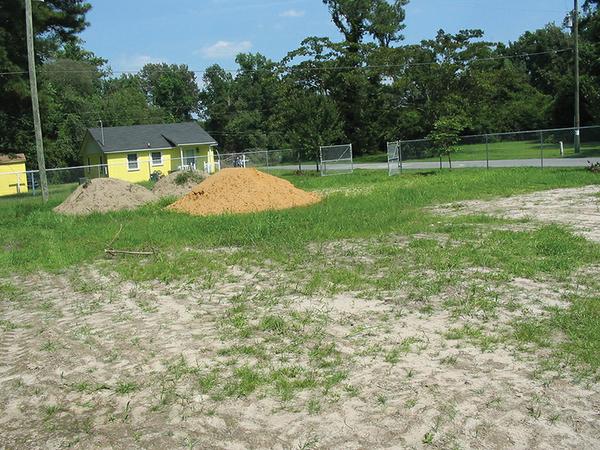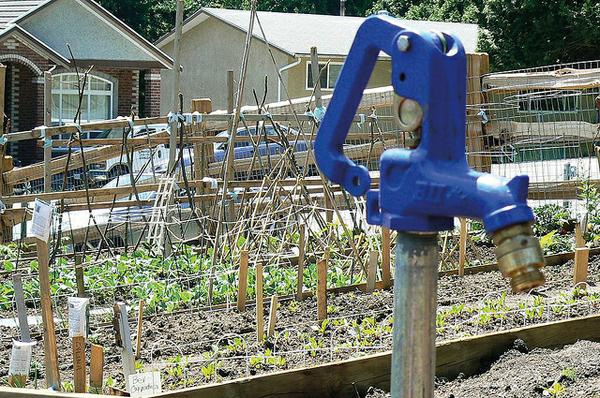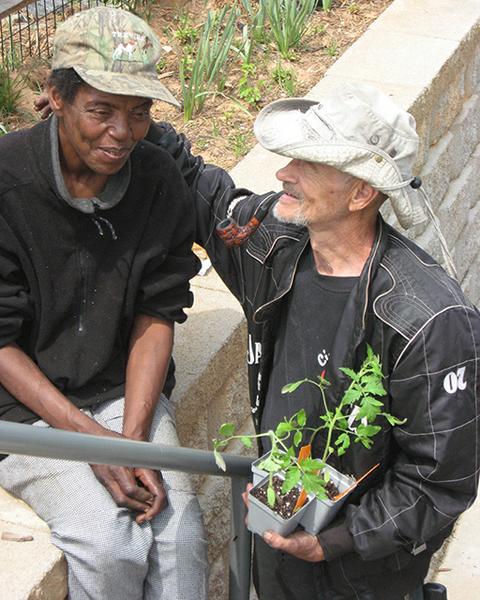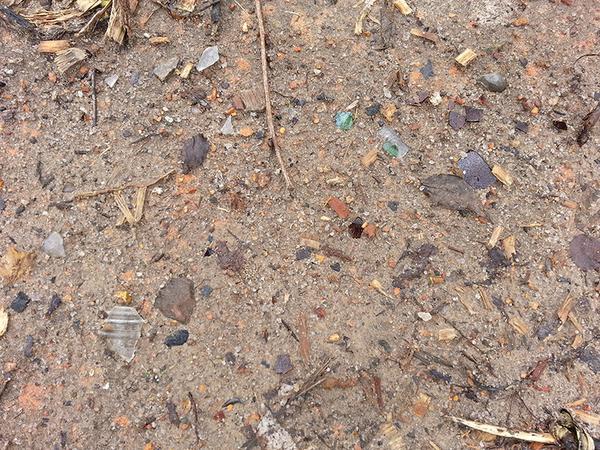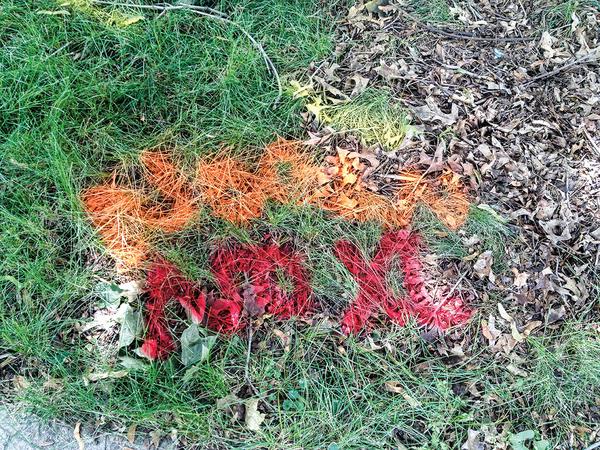A community food garden’s site has a big impact on its identity and long-term viability. No site is perfect, but some sites are much better choices than others.
Site selection involves three steps:
- Locating potential sites
- Evaluating sites and picking the best one
- Establishing a use agreement for the chosen site
Do not rush the site selection process, even if garden team members are very eager to get started digging soil and planting seeds. Ideally, come up with two or three sites to choose from. Runners-up can serve as sites for future gardens.
Sometimes a sponsor or the garden team already has its heart set on a specific site for the garden. Even in this situation, carefully evaluate the site using the site selection checklist. Thorough evaluation helps the team anticipate and correct problems early on.
Locating Potential Sites
Many times, a garden team may start by driving around the area targeted for the garden, scouting for interesting potential sites, and asking local officials, residents, and community garden groups for suggestions.
Gardeners also look at county GIS maps that show parks and other publicly owned land. Google Maps are also helpful and readily accessible, allowing a virtual flyover of the target area.
Site Evaluation
The next step is to evaluate finalist sites. When rating sites, consider the needs of the gardeners, the site’s suitability for food gardening, and the options available for gaining secure, long-term access to the site for gardening.
Safety. The perception of safety and actual safety are both important. Gardeners will reject sites where they do not feel safe, and some gardeners may be anxious even in areas where others feel relatively safe. If pushers currently use the site for drug sales, a gang considers it their turf, aggressive dogs wander nearby, or the site is isolated, the garden team must address these risks or select an alternate location. The presence of a community garden can discourage crime and vandalism, but this takes time.
Convenient location. The garden should be reasonably close to where gardeners live and convenient to reach by walking, biking, or driving a short distance. Make sure that parking will not be a problem.
Community factors. Be sure the site is acceptable to the neighborhood, especially to those living right next door. Supportive neighbors are a huge asset, keeping a protective eye on the garden, while unsupportive or antagonistic people right next door can be devastating.
Current uses of the site. For example, is it the unofficial neighborhood dump? Will that pattern continue even after the garden is there? Do the kids play soccer there? Where will they go?
Secure land tenure. It is only fair to gardeners that their garden be treated as more than a temporary land use. Seek a minimum five-year commitment, ten years preferred.
Suitability for expansion. Is there an easy, obvious way for the garden to grow bigger if there is high demand for plots?
Food Garden Needs
Reliable water. A community food garden site must have a reliable water source for optimal food production and gardener success. Transplants and newly seeded vegetables require daily watering until they are established, and productive food gardens need roughly an inch of water per week during the growing season.
A municipal water line is a practical way to provide water for a community garden. Look for a water meter on the site, which makes water hook up easier and less expensive. If there is no meter, locate the closest municipal water line that the garden can tap into.
As an alternative, partner with a nearby business, place of worship, or private home willing to let the garden obtain water by running a hose from their tap.
If there is a well on site, test the water and the flow rate to ensure the quality and volume are sufficient to supply the garden; if so, determine the cost of installing and maintaining a pumping system.
Harvesting rainfall is an excellent idea, if only to supplement other water sources. If the garden is interested in this option, look for an adjacent roof suitable as a collector.
Gardeners can also haul in water themselves using containers and watering cans. For highly motivated gardeners in small gardens, this sometimes provides adequate water, at least enough to get a garden started.
Full sun. For best productivity of the widest variety of fruits and vegetables, select a site with full sun for at least 8 hours per day. To flower and produce fruit (for example tomatoes, peppers, squash, melons), most plants require a minimum of 8 hours of sunlight per day. However, in as little as 6 hours of full sun per day it is possible to grow many culinary herbs, leafy vegetables, and root crops to harvest the root, stem, or leaves (for example radishes, celery, spinach). Be sure to consider light through the whole growing season. An appealingly sunny spot in February may be shaded in May after the oaks leaf out.
Safe, workable soil. Vegetables grow best in rich, well-drained soil. Look carefully at a site’s soil, enlisting the aid of an experienced gardener, farmer, or Cooperative Extension agent. If the soil is extremely poor or contaminated, consider the pros and cons of building raised beds. For more information, see chapter 8, Soil, Plots, and Planters.
Other Considerations
Trees. Mature trees are good for a community garden, offering beauty and a place to rest in the shade. Unfortunately, their leaves and roots also compete with food crops. Be sure the site is large enough to locate vegetable plots in sunny locations well away from large trees. Bring a compass to check directions. Trees or tall buildings on the south side of the garden may block needed sun, but those located to the north will not cause problems.
A site without a steep slope is easiest to lay out and manage.
Fire ants and bermudagrass. Fire ants, bermudagrass, and other weeds can be very difficult to control after the garden is established, especially if the garden only allows organic techniques and bans synthetic pesticides and herbicides. The best strategy is to control tough weeds and pests on a site before attempting to establish an organic garden. See chapter 13, Troubleshooting, for more ideas.
Trash. Removing trash is part of starting a garden on many urban lots, but take note if the kind of trash demands extraordinary measures (for instance, large items, such as junked cars, or the presence of broken glass or used needles).
Parking and bulk supplies. Is there a suitable place to drop bulk supplies such as compost and mulch? Is there plenty of space for a parking area for gardeners and volunteers?
Land use and zoning. Check zoning and land use restrictions. For example, if a site is in a floodplain or greenway, permanent structures, such as sheds, fences, and raised beds may not be allowed due to environmental restrictions.
Drainage and flooding. Heavy rains and flooding are part of life in North Carolina. Check sites carefully for flooding potential and drainage issues, especially near creeks. A simple drainage system may be all a site needs to thrive.
Call before you dig. Dial 811 to have any underground utilities on the site located and marked. If there are underground utilities where you hoped to garden, consider a different location.
|
Site Selection Checklist Gardener Needs
Food Garden Needs
Other Considerations
|
Arranging to Use a Site
After selecting a site, the garden team must formally arrange to use it for a community food garden. Begin by requesting affirmation from the landowner, ideally in writing, that community gardening will be the officially designated land use on the site for a period of at least five to ten years. Gardeners, sponsors, and supporters invest time, money, and creativity to develop a successful garden. If a site’s owner, public or private, is unwilling to offer clear assurances that the garden will be protected from summary eviction, consider another site. A fair agreement should also have an escape clause allowing the owner to reassert control and to use the site for other purposes if the garden is abandoned or badly neglected.
The garden team should seek official approval, in writing, even for a garden on a publicly owned site, such as a garden in a public park. Draft a “letter of commitment” that affirms use of the land for a garden for five or more years and clarifies the relationship between the garden and the public agency. This is particularly important when existing policy documents, such as the Park District Master Plan, have no provisions for community gardens.
Private Leases
For privately owned property, begin by locating the property owner. Schedule a meeting to share information about the garden project. If the owner is receptive, start negotiations on rental payments and a lease.
Check with other local community gardens to find a model of a lease agreement that has stood the test of time. The lease agreement should cover the following issues: How much is rent, and when is it due? What constitutes grounds for terminating the lease or agreement? To whom do improvements belong if the garden must close? Is the landowner willing to assist with garden resources such as water or a fence?
Insurance
Some landowners, and even some public agencies, will ask that a community garden be covered by liability insurance purchased by the garden group. Jack Hale, former president of the American Community Gardening Association and an authority on this issue, cautions that liability insurance is not always necessary. He urges community gardeners to research the insurance question carefully before embarking on a fundraising campaign to pay for an expensive but unneeded policy or giving up on a promising garden site. If the garden does need insurance, ask supportive organizations for help. For instance, can the garden be covered through an existing policy held by a large non-profit or university? If buying a policy is necessary, Hale suggests working with a firm that represents many different carriers and getting at least one quote from one of the ten largest insurance carriers.
Publication date: Aug. 10, 2017
AG-806
Other Publications in Collard Greens and Common Ground: A North Carolina Community Food Gardening Handbook
N.C. Cooperative Extension prohibits discrimination and harassment regardless of age, color, disability, family and marital status, gender identity, national origin, political beliefs, race, religion, sex (including pregnancy), sexual orientation and veteran status.

